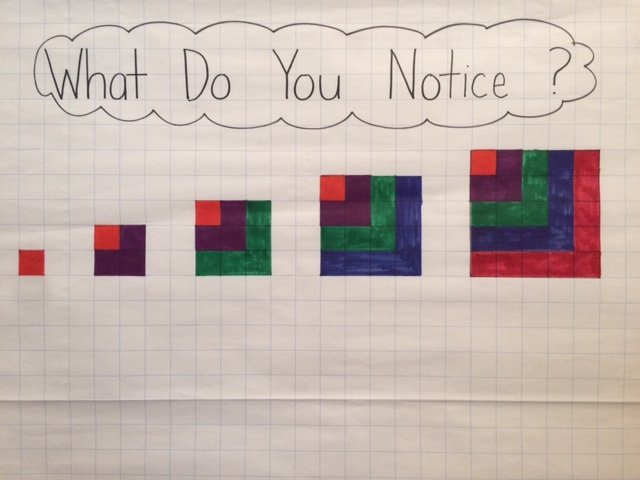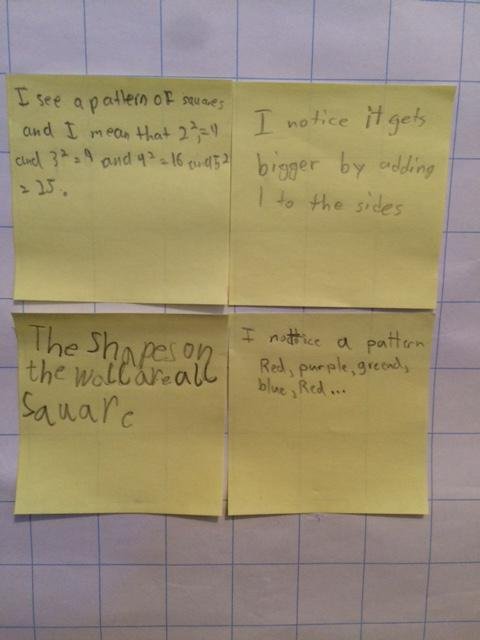
Primary students (K-2): shapes, counting, colors
Intermediate students (3-5): looking for patterns, square numbers, odd numbers, area model of multiplication
Mathematics is described as the science of pattern. When we discover patterns, we can then generalize them which makes doing math so much easier. Square numbers are a great example of this. A square number, in our case perfect squares since we are dealing with whole numbers, is a number that has been multiplied by itself. 1 x 1 = the square number '1'. 2 x 2 = the square number '4' and so on. When using inch tiles, students can easily see that these square numbers actually make squares as is represented by the graph paper here. But another pattern emerges. Each consecutive square number is the result of adding the next consecutive odd number - represented with different colors here: 1 + 3 = the square number '4'; 1 + 3 + 5 = the next square number '9' and so on.

"I see a pattern of squares, and I mean that 22 = 4 and 32 = 9 and 42 = 16 and 52 = 25."
"I notice it gets bigger by adding '1' to the sides."
"The shapes on the wall are all square."
"I notice a pattern red (orange), purple, green, blue, red."